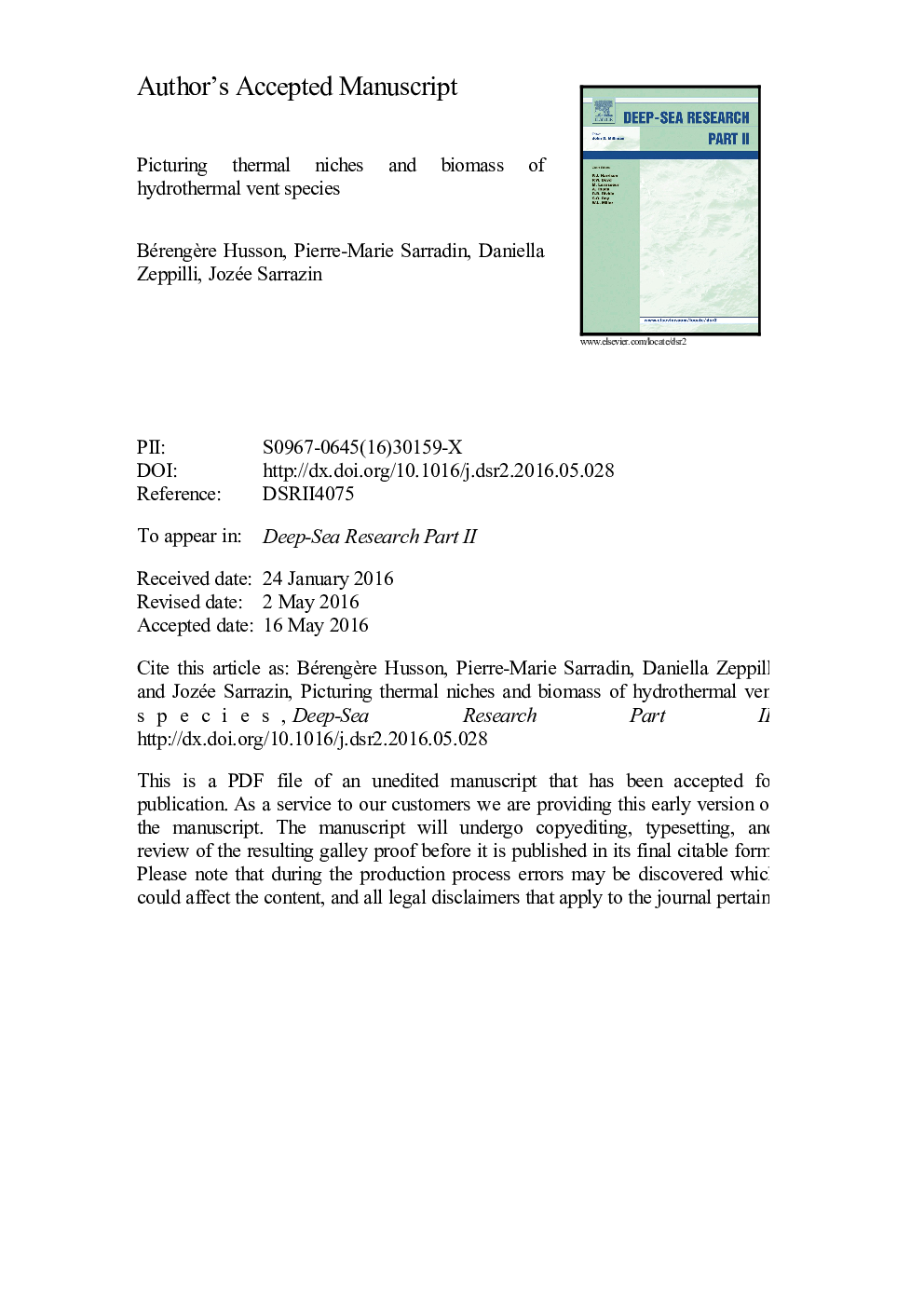| Article ID | Journal | Published Year | Pages | File Type |
|---|---|---|---|---|
| 5764815 | Deep Sea Research Part II: Topical Studies in Oceanography | 2017 | 59 Pages |
Abstract
Habitat similarities grouped mussels into three size categories: mussels with lengths ranging from 0.5 to 1.5Â cm, from 1.5 to 6Â cm, and mussels longer than 6Â cm. These size categories were consistent with those found in previous studies based on video imagery. The three size categories featured different associated fauna. The thermal range of mussels was shown to change with organism size, with intermediate sizes having a broader thermal niche than small or large mussels. Temperature maxima seem to drive their distribution along the mixing gradient between warm hydrothermal fluids and cold seawater. B. azoricus constitutes nearly 90% of the biomass (in g dry weight /m2) of the ecosystem. Mean individual weights were calculated for 39 of the 79 known taxa on Eiffel Tower and thermal ranges were obtained for all the inventoried species of this edifice. The analysis showed that temperature is a suitable variable to describe density variations among samples for 71 taxa. However, thermal conditions do not suffice to explain biomass variability. Our results provide valuable insights into mussel ecology, biotic interactions and the role of B. azoricus in the community.
Related Topics
Physical Sciences and Engineering
Earth and Planetary Sciences
Geology
Authors
Bérengère Husson, Pierre-Marie Sarradin, Daniela Zeppilli, Jozée Sarrazin,
